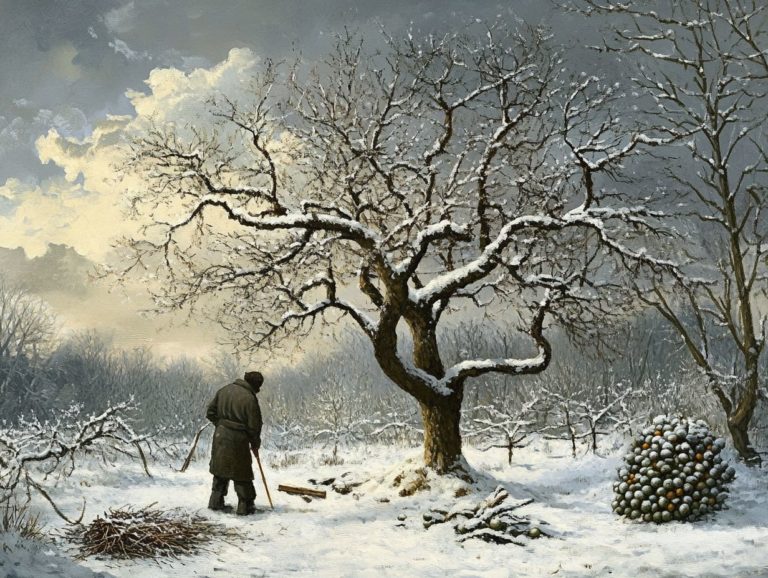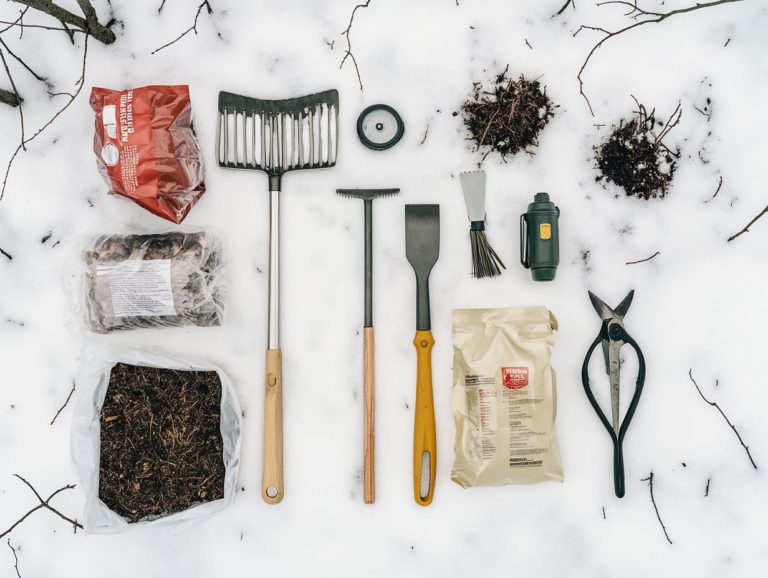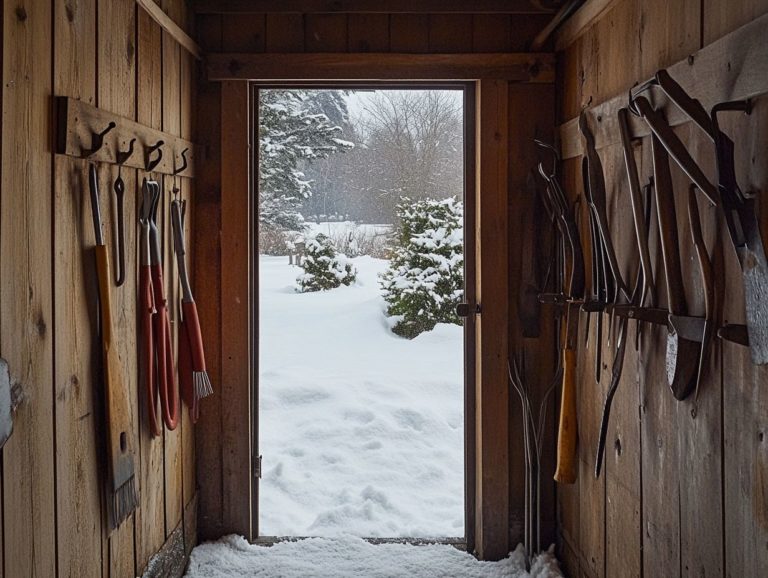What to Do With Your Summer Annuals in Fall
As summer gracefully fades and autumn makes its entrance, you might find yourself contemplating the fate of your cherished summer annuals. These vibrant plants have brought you joy and color throughout the warm months. However, the shifting season requires some thoughtful preparation.
There s a world of possibilities awaiting you, from tidying up your garden and harvesting seeds to exploring the option of indoor transplanting and planning your fall garden. Discover how to care for your summer annuals, safeguard your perennial plants, and lay the groundwork for a flourishing garden in the coming year.
Contents
- Key Takeaways:
- Preparing for Fall
- Options for Your Summer Annuals
- Dealing with Annuals That Won’t Survive the Winter
- Final Tips and Considerations
- Frequently Asked Questions
- What should I do with my summer annuals as fall approaches?
- Should I leave my summer annuals in my garden over the winter?
- Can I replant my summer annuals in the spring?
- What can I do with my summer annuals if I don’t want to replant them in the spring?
- Should I cut back my summer annuals before disposing of them?
- What should I do with the soil where my summer annuals were planted?
Key Takeaways:
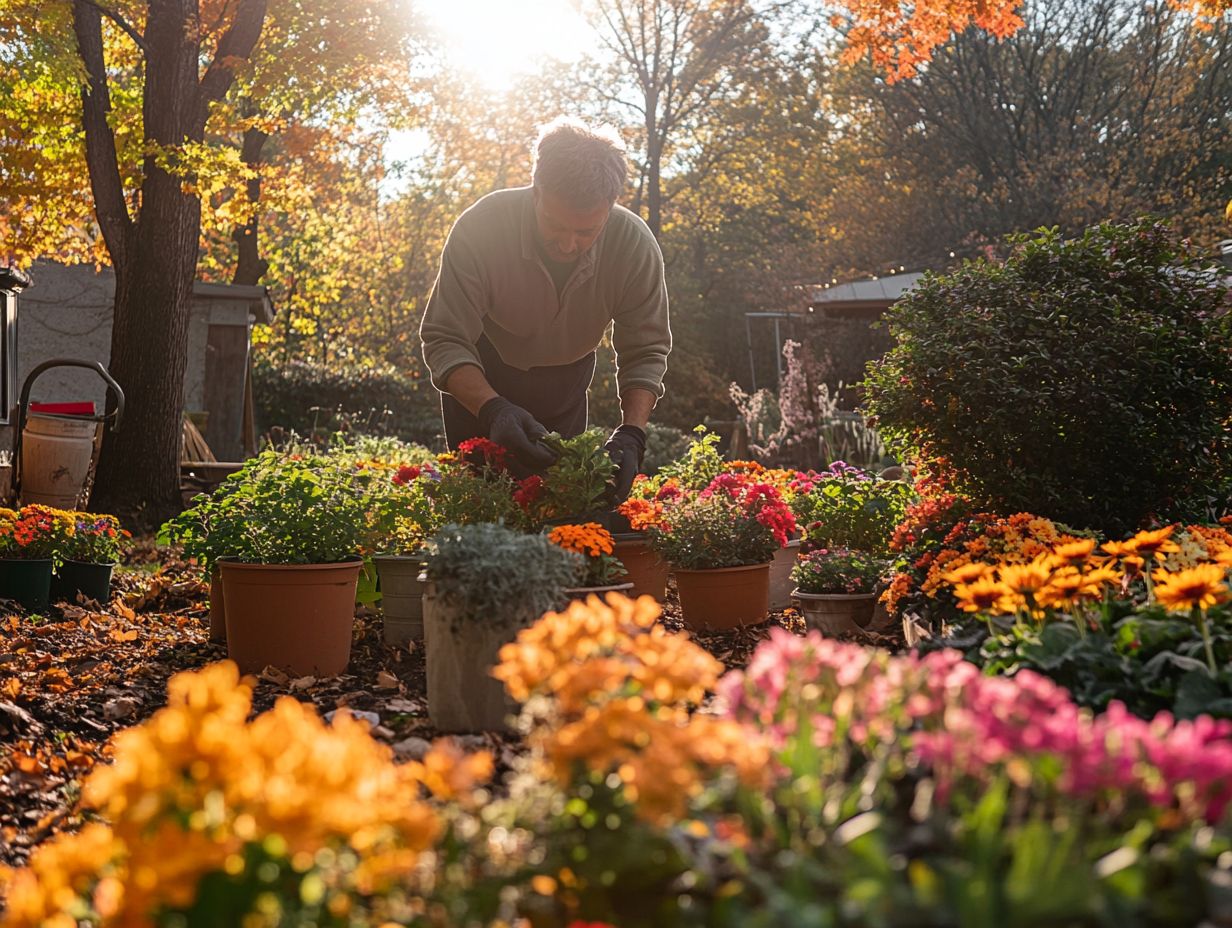
- Prepare your garden for fall by cleaning up and harvesting seeds from your summer annuals.
- Consider transplanting your annuals to indoor pots or creating a fall garden with them.
- Dispose of annuals that won’t survive winter by composting or disposing of them properly. Protect your perennial plants and plan for next year’s garden.
What are Summer Annuals?
Summer annuals are your ticket to a vibrant garden, serving as the cornerstone for a colorful outdoor display during those warm months. These seasonal blooms, such as beloved chrysanthemums, pansies, asters, and black-eyed susans, thrive across various plant hardiness zones, adding color and beauty to your garden.
With proper garden maintenance and care, you can showcase summer annuals in charming potted arrangements or weave them into larger landscaping projects that highlight their unique beauty and versatility.
Beyond their stunning appearance, summer annuals are celebrated for their ability to bloom all season long, providing a relentless cascade of color. Their hardiness and adaptability make them suitable for different garden environments, whether basking in full sun or enjoying a bit of partial shade.
Picture the vibrant dance of chrysanthemums mingling with the delightful faces of pansies, while black-eyed susans lend a wild charm to the mix. Not only do these annuals enhance visual interest, but they also attract pollinators, enriching the ecosystem of your garden.
To ensure these beauties flourish throughout their growing season, regular deadheading (removing spent flowers) and moisture management (ensuring adequate watering) are essential. Embrace these practices, and watch your garden thrive.
Preparing for Fall
As summer gracefully gives way to autumn, preparing for fall becomes vital for maintaining a thriving garden and ensuring captivating displays in the months ahead.
This season offers a unique opportunity to embrace the beauty of fall gardens, where annuals like ornamental grasses and seasonal vegetables can truly thrive with the right care.
The process begins with fall clean-ups, which involve thoughtfully removing annuals and evaluating existing plants. This allows you to craft a fresh canvas for your autumn masterpieces.
Cleaning Up Your Garden
Cleaning up your garden during the fall is essential for effective maintenance. It lays the groundwork for a flourishing landscape come spring. This process starts with a composting system to recycle organic matter, minimizing waste while enriching your soil with vital nutrients.
By effectively managing your compost pile while you tackle fall clean-ups, you create a healthy environment that supports both your existing plants and future growth.
To kick off a successful composting system, gather kitchen scraps, yard waste, and other organic materials. Layer them thoughtfully in a compost bin or designated area. Keep that pile lively by turning it frequently to aerate and encourage decomposition.
As cooler months approach, act quickly to tidy up by removing dead plants, fallen leaves, and debris that could attract pests or diseases.
Consider incorporating mulching as a strategy to retain moisture and suppress weeds, enhancing the overall health of your garden. This holistic approach fosters a vibrant ecosystem, making spring maintenance a breeze.
Harvesting Seeds for Next Year
Harvesting seeds from your annuals in the fall is a rewarding practice! It sets you up for a flourishing garden next year while maintaining the continuity of your floral displays. This method involves carefully selecting mature flowers, like asters and violas, at their peak before they begin to wilt. By doing so, you ensure that the seeds you collect will produce vibrant blooms in the upcoming growing season.
Incorporating this straightforward yet effective technique into your fall garden preparation allows you to celebrate the beauty of summer annuals year after year.
Beyond enhancing the colors in your garden next season, this seed collection practice fosters a more sustainable approach to gardening. Choose annuals such as zinnias, cosmos, and marigolds to increase biodiversity while reducing reliance on commercial seed purchases. This not only saves you money but helps preserve the specific traits of your favorite plants!
As these flowers adapt to local conditions, they develop resilience that enhances their growth, enriching the entire garden ecosystem. Embracing this practice reinforces the cycle of nature, making each bloom even more precious.
Options for Your Summer Annuals
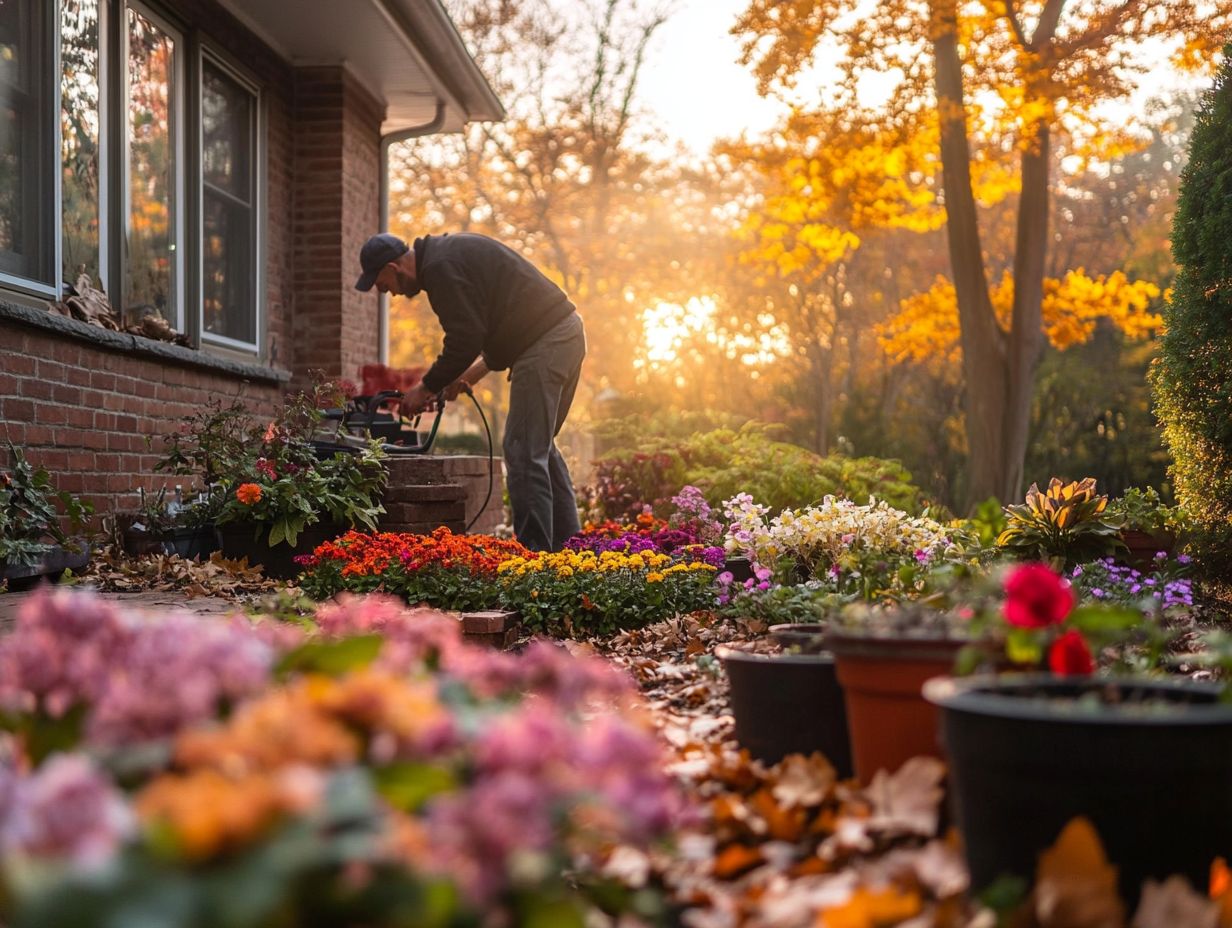
Exploring options for your summer annuals reveals a world of possibilities. This ensures your garden remains vibrant and engaging even as the seasons transition.
Transplant these lively plants into indoor pots or incorporate them into fall planter displays to extend their beauty and longevity. Combine summer annuals with bulbs, shrubs, and trees to create a dynamic landscape, showcasing a rich tapestry of textures and colors throughout the autumn months.
Transplanting to Indoor Pots
Transplanting summer annuals into indoor pots is a brilliant way to preserve their beauty! By carefully selecting healthy specimens like pansies and chrysanthemums, you can create stunning potted arrangements that brighten your indoor spaces.
This approach allows you to enjoy fall displays within your home while maintaining the vibrancy of your summer annuals as they transition from outdoor gardens to indoor settings.
When embarking on this delightful endeavor, choose pots with good drainage and consider the light levels in your home to ensure your plants thrive. Positioning them near a bright window mimics their natural environment and promotes healthy growth.
Mixing different textures and colors enhances visual appeal, transforming your indoor arrangement into a charming focal point. Remember to water and fertilize appropriately, as these plants will require a bit of extra care while adapting to their new indoor life!
Proper care ensures their longevity and vibrancy shine throughout the colder months.
Creating a Fall Garden with Annuals
Creating a fall garden with annuals gives you the perfect opportunity to showcase vibrant autumn colors and keep your landscape lively as temperatures begin to dip. Select annuals that thrive in cooler weather, such as violas and black-eyed Susans, to elevate your outdoor aesthetics while preparing for the colder months ahead.
This thoughtful approach not only brings joy to your garden but also contributes to a flourishing ecosystem.
Mixing textures can further enrich your garden’s visual appeal. Planting asters alongside ornamental kale creates a stunning contrast in color and adds depth with varying forms.
Incorporating seasonal favorites like snapdragons offers continuity and a cheerful touch to your fall garden. Regularly remove spent flowers, or deadhead, and water to keep these plants vigorous and blooming, ensuring that your garden remains a vibrant showcase.
Don t overlook the importance of mulching! Mulching plays a crucial role in preserving soil moisture and protecting roots from chilling temperatures. This will maximize the impact of your annuals throughout this picturesque season.
Dealing with Annuals That Won’t Survive the Winter
Managing annuals that won t withstand the winter is essential for taking care of a lively garden and preparing for the next growing season. Thoughtfully removing these plants during your fall clean-ups wards off potential diseases and pests and paves the way for new growth.
Employing effective composting methods for disposing of these plants enriches your soil while embracing sustainable gardening practices. This fosters a healthy garden environment for the future.
Composting or Disposing of Plants
Establishing a composting system for your plant waste is a fantastic, eco-friendly approach to enriching your soil and keeping your garden thriving. By creating a well-managed compost pile, you recycle organic matter from your annuals, ensuring that valuable nutrients return to your garden.
This practice minimizes waste and supports your sustainable gardening efforts, allowing you to nurture future plantings with rich, homemade compost.
Building your compost pile involves a few straightforward steps. First, choose a sunny spot for your compost pile. Plan for proper aeration it’s crucial for speeding up decomposition. Gather materials like kitchen scraps, grass clippings, and dried leaves to create a balanced mix of green and brown matter, fostering vibrant microbial activity.
Ongoing maintenance is key. Regularly turning the pile promotes airflow and ensures efficient breakdown, transforming your waste into nutrient-dense compost. Embracing this method elevates your garden’s health while encouraging biodiversity, beautifully illustrating the interconnectedness of eco-friendly practices.
Final Tips and Considerations
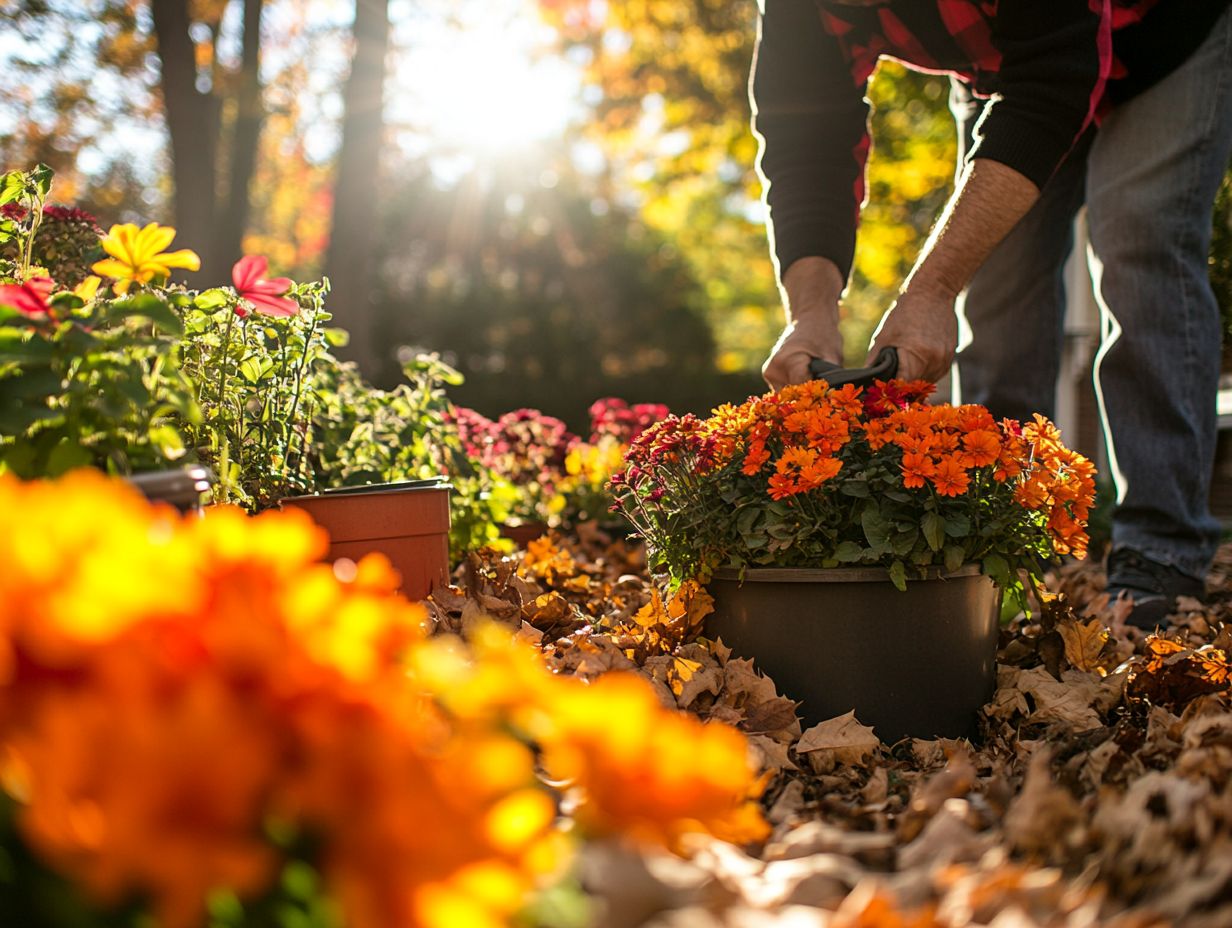
Final tips and considerations for your garden will ensure it thrives year-round, creating an inviting space for both plants and visitors.
Protecting your perennial plants during the fall guarantees their survival through the winter months. Planning for next year s garden is fulfilling, allowing you to seamlessly incorporate seasonal vegetables and blooms.
Take proactive steps now to craft a flourishing outdoor sanctuary that brings joy and beauty for years to come.
Protecting Perennial Plants
Protecting perennial plants as the colder months approach is essential for ensuring their survival and vitality. Implement techniques such as mulching, proper watering, and strategic placement to effectively shield these valuable plants from harsh winter conditions.
By taking these protective measures, you cultivate a healthy garden ecosystem that thrives throughout all seasons. Keep a close eye on temperatures and wind patterns, as they significantly impact plant health.
Utilizing row covers creates a warmer area around your plants during particularly chilly spells. Pruning dead or diseased foliage enhances overall plant health and reduces the risk of pests and diseases overwintering in your garden.
By being proactive and attentive, you can ensure that your perennials are not just surviving but flourishing when spring arrives, bringing vibrant blooms and robust growth.
Take these steps to prepare your garden for a vibrant spring!
Planning for Next Year’s Garden
Planning for next year’s garden can be a thrilling endeavor. It invites you to select seasonal vegetables and reimagine your outdoor spaces. Reflecting on your previous gardening efforts and identifying what flourished paves the way for a vibrant and healthy garden that offers beauty and nourishment throughout the year.
This thoughtful strategy sharpens your gardening skills and promotes sustainable practices that benefit both you and the environment.
Start by creating a seasonal vegetable chart to uncover which crops thrive in your region during different times of the year. Consider integrating techniques like crop rotation the practice of changing the type of crops grown in a particular area each season and companion planting, which involves planting compatible crops together to enhance soil health and naturally deter pests.
As you design your garden layout, focus on maximizing sunlight exposure and water efficiency. These are key elements for fostering healthy growth. Utilizing raised beds elevated plots that improve drainage and soil quality or container gardening can support a sustainable ecosystem, ensuring your garden thrives with minimal environmental impact.
This well-rounded plan will guide you on a rewarding journey toward cultivating a lush sanctuary of sustainability and wellness.
Frequently Asked Questions
What should I do with my summer annuals as fall approaches?
As fall approaches, it’s important to think about your summer annuals. These plants are typically not cold-hardy and will likely die off in the colder temperatures of fall and winter.
Should I leave my summer annuals in my garden over the winter?
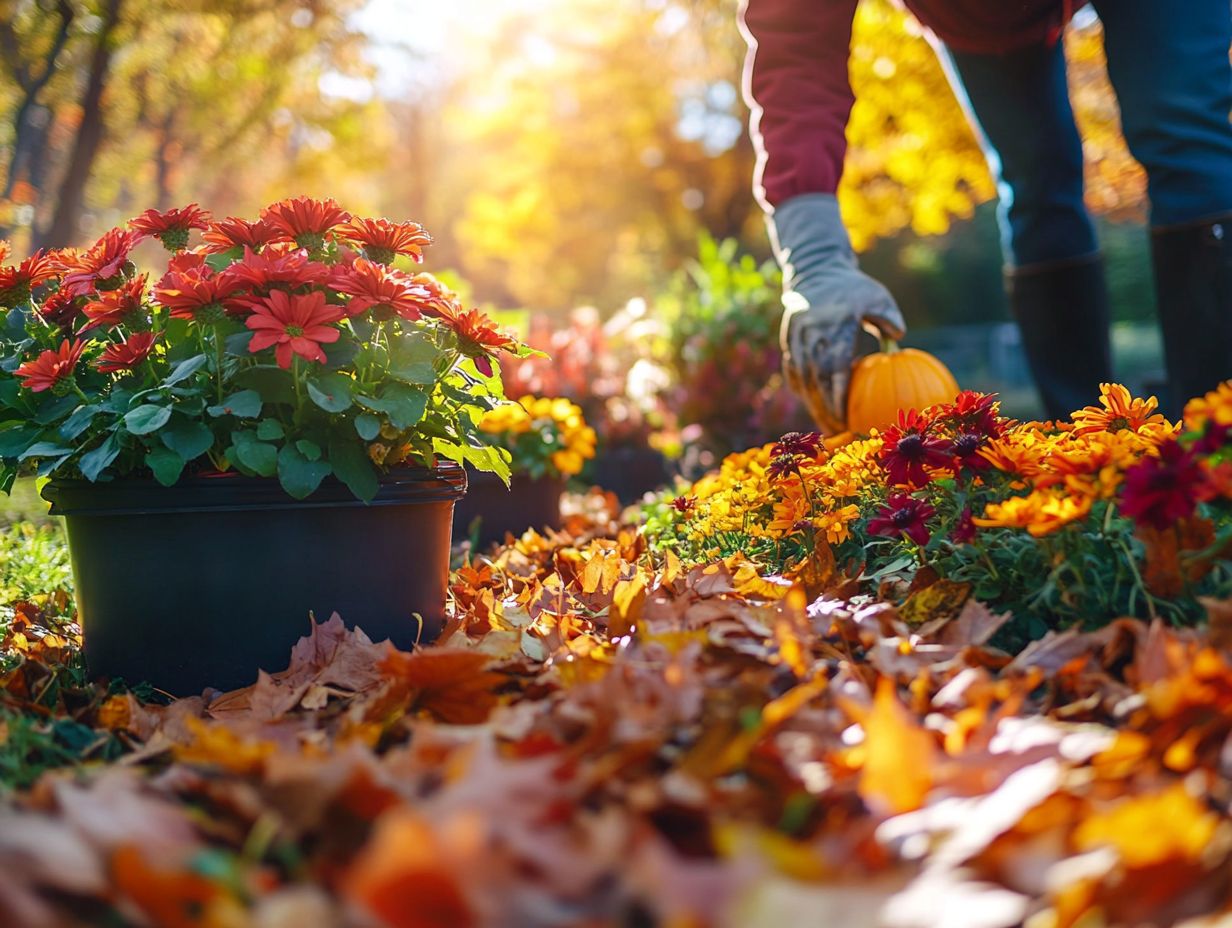
No, it’s not recommended to leave your summer annuals in your garden over the winter. They will likely die off and become an eyesore.
Can I replant my summer annuals in the spring?
Yes, you can replant your summer annuals in the spring. However, keep in mind that annuals only last one growing season, so it’s best to start with fresh plants each spring.
What can I do with my summer annuals if I don’t want to replant them in the spring?
If you don’t want to replant your summer annuals in the spring, you can compost them or donate them to a local community garden or school. Some annuals can also be brought indoors and treated as houseplants during the winter.
Should I cut back my summer annuals before disposing of them?
It’s recommended to cut back your summer annuals before disposing of them. This keeps your garden healthy and thriving!
What should I do with the soil where my summer annuals were planted?
After removing your summer annuals, it’s important to replenish the soil with nutrients for future plants. You can add compost or fertilizer and mix it in before planting new plants in the area.
Ready to create your dream garden? Begin planning now!


